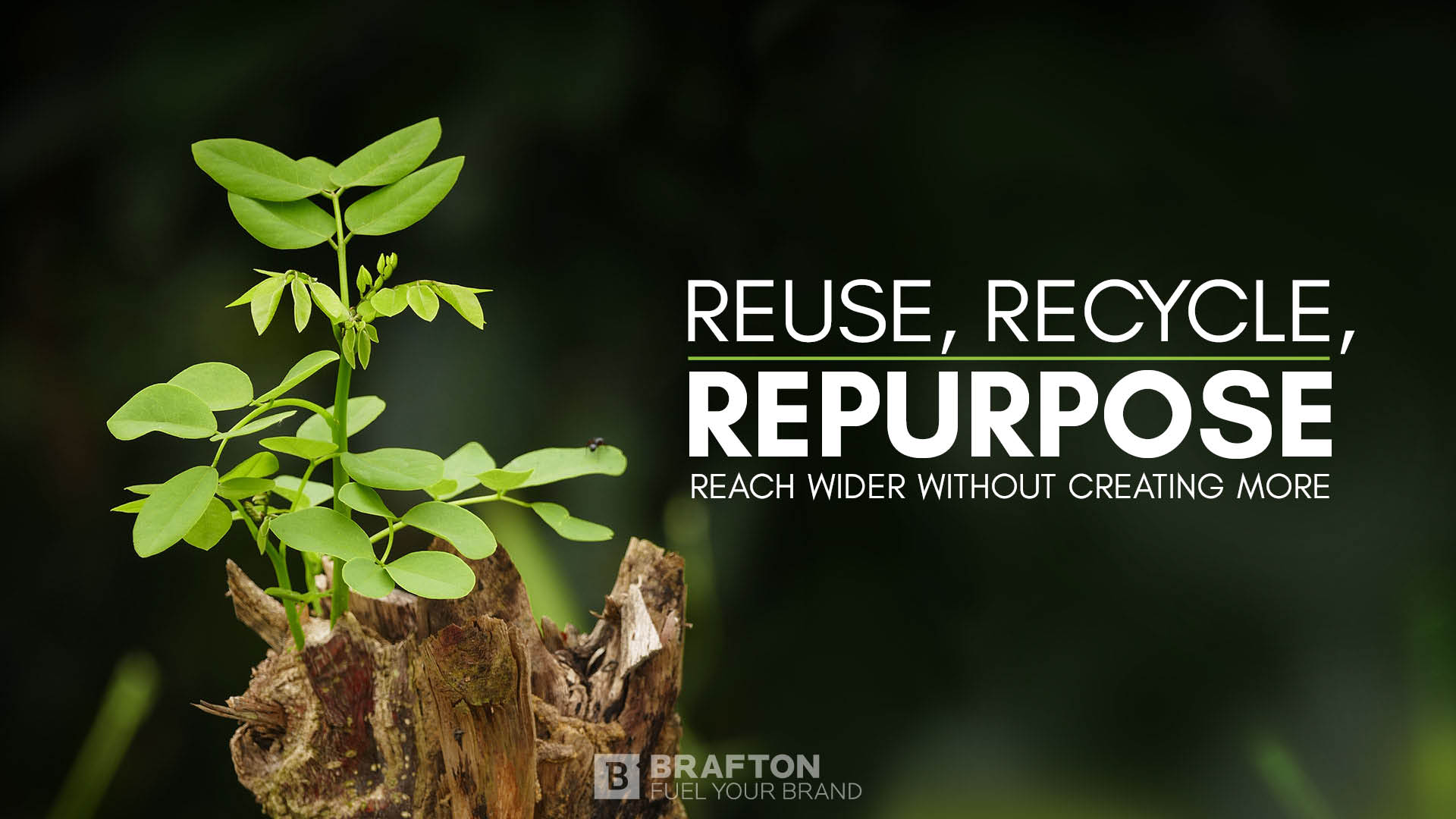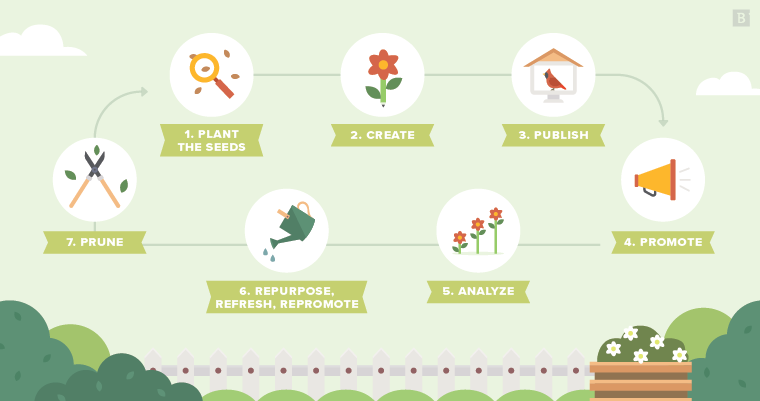As marketers, it’s our job to make sure our content is living its best life.
Words and graphics might not breathe like plants do, but content still requires its own equivalent of watering and pruning to deliver the results that keep brands alive and thriving. The fear of letting them down and becoming a plant murderer also hits home, considering I can’t think of one marketer who wants to be responsible for a failed content strategy.
It gets even more personal when you consider all the hours and resources dedicated to creating high-quality content. You want more than a few minutes in the spotlight before you start the whole process again.
Don’t panic: Green thumbs aren’t required in content marketing. Your expert management of content lifecycles can make sure you maximize its potential and reap all the rewards.
What exactly do we mean by content lifecycle?
From ideation to creation to distribution, digital content undergoes several stages throughout its existence. The content lifecycle is the beginning, middle and end of the story, and that narrative varies between types of content. While archiving and deleting content is necessary at times, it’s a cycle because there’s always more to create and there’s incredible value in breathing fresh life into content that already exists.

Take this blog for example. It started as a thought and then developed into a more solidified idea through content planning and keyword research. From there, it was ready to take the form of a blog, get published to our site and then promoted across various platforms. After it’s been live for a while, we might update it with some fresh ideas and more high-performing keywords to bring it back to your attention. It may even expand to social posts and graphics that also cover the content lifecycle topic. If it turns out our readers really hate it, we might decide to remove it from our site one day – but, of course, we hope that won’t be in its near future.
How does this play into content management strategy?
Content lifecycle management is like your work version of watering the plants. It’s how you can oversee and direct the content lifecycle, ensuring every piece progresses through each stage. This requires a ton of coordination to determine how each piece of content will come to fruition, including scheduling timelines and figuring out who’s involved at each stage.
A repeatable, centralized process is especially important for creating content at scale. So much so that enterprise content management is a thing. It helps large companies create a centralized business process for content lifecycle management that meets not only strategic goals and brand guidelines but also regulatory requirements and security risk concerns.
No matter the size of the company, a strong content management strategy stems from working with teams that understand the ins and outs of strategic marketing approaches and utilizing the right technology to automate as much of the process as possible.
The stages of the content lifecycle
No matter how great your content management strategy, there won’t be much to manage without a well-defined content creation process. Not to mention that it’s essential for achieving your marketing goals, such as driving traffic to your website, building brand awareness, driving engagement and earning audience trust.
Of course, you’ll add your own touch to create processes that work for you and your brand, but your content workflow will probably look something like this:

Stage 1: Plant the seeds
You know the drill: Do your research, determine your goals, develop your content strategy and ideate once you know what you’re working toward. Make sure your audience is top of mind from the beginning so you can create content that answers their questions and piques their interests.
Stage 2: Create
Call in the writers, designers and videographers because it’s time to water the seeds and start executing your plan. The content creation stage helps you bring your website to life with an engaging mix of content types, complete with the brand voice and style that users recognize and trust.
Stage 3: Publish
When the content is ready to go, give it a home on your site. Some digital assets can even live on more than one platform, such as a graphic that’s embedded in a blog post and shared on social. Once you hit publish, your content can finally bloom and (ideally) drive the desired engagement.
Stage 4: Promote
Your digital content may be live on your site, but you have to make sure your viewers know it exists. This is where your promotion tactics work wonders, such as sending out email newsletters and sharing social posts to promote your new content.
P.S. There’s so much to say about promotion processes that we have a whole section on our blog dedicated to content distribution.
Stage 5: Analyze
Use tools like Google Analytics to see how well your content is performing. Metrics like page views, web traffic, conversion rates and newsletter subscriptions can help you determine what’s working – and where you might need to send in some reinforcements. What’s more, this step in the content management process can also inform the actions you take in the next stage.
Stage 6: Repurpose, refresh, repromote
Now it’s time to go “Lion King” on your content strategy. This is the stage where you really let your content spread its wings and use it to inspire your next wave of blogs, graphics and other content marketing heroes.
Content marketing is not a set-it-and-forget-it kind of thing. If you really want to get the most out of the time and effort you put into content creation, a content repurposing workflow is key. Here are a few examples of what we mean:
- Reoptimize blogs with fresh keywords to increase their search ranking.
- Turn popular blog posts into videos, podcasts, social posts, infographics and other types of content.
- Use statistics and hard-hitting points from longer-form content in social posts. (Link to the original content it came from, of course!)
- Update content and republish on multiple platforms.
- Combine content into round-up posts.
Refreshing, repurposing and repromoting processes allow you to reach more people, address relevant topics in depth and touch all levels of the marketing funnel. That translates to digital content that lives a long and fulfilling life.
Stage 7: Prune
“Lion King” also taught us that the harsh reality of life is that it does, unfortunately, come to an end. This is the content pruning stage of your content management strategy, which basically means killing off poor performing pages so they don’t hurt your SEO. Repurposing can only do so much for some content, especially if the format or topic no longer serves a purpose for your audience.
To determine your content’s fate, conduct an audit of your website to analyze how all your URLs are performing. Focus on metrics like page views, backlinks, traffic and social shares. Remember that low performance doesn’t always mean low quality, so you might have to dig deeper to fight the root of the cause. Sometimes it’s a technical issue or distribution fault you can address before removing the content.
Remember that it’s a content lifecycle, which means the end of some of your digital assets will only bring the beginning of more. Back to stage one you go!
Let your content live on
The take-home message here is that your content can do a lot in its lifetime. Don’t let the content lifecycle wither away after you hit publish. Instead, develop a content management strategy that calls for continually auditing, refreshing and repromoting your content. That way, you – and your audience – can get the most out of its potential.





